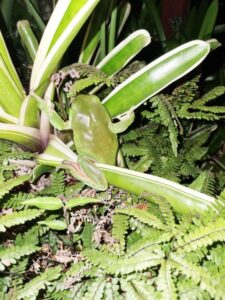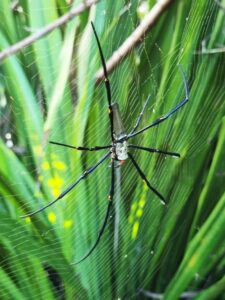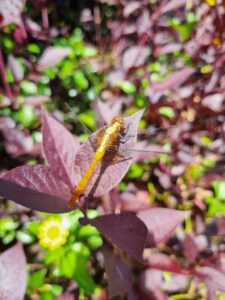
Personal protection – disease prevention
By Patrick Regnault
Working in gardens gives immense pleasure but it is not without risk. A garden has many guests including small creatures that are part of the ecosystem. It is not all about bees and butterflies and cute little birds. Gardens will be home to small creatures like insects, arachnids, and perhaps leeches, and for those working in non-urban areas, snakes. They are part of a biodiverse garden.
The personal protective equipment needed to avoid potential problems are one part of the solution. For the longer term, we may need to look at how a design can be created to limit the amount of some of these creatures and how those design constraints influence the construction and maintenance of the garden.

Insect bites can be temporarily painful but in the case of mosquitos there is an added risk as they are the carrier of some debilitating diseases. The Alphaviruses are the most common with the highest rate of cases, and are found throughout Australia; Ross River Virus (all of Australia but mostly the tropics and subtropics), Barmah Forest Virus (all of Australia but predominantly northern Australia). Of the Flaviviruses found on the continent, Dengue Virus (northern Qld) has the most cases. Other Flavivirus include Japanese encephalitis, Murray Valley encephalitis, and Kunjin viruses, all occurring mainly in northern Australia with very few cases each year.
How to prevent mosquito bites? Firstly, cover yourself, however, even that is not always sufficient. Using tropical strength sunscreen and insect repellent seems to work effectively on exposed flesh. When it comes to limiting mosquitoes in existing or new gardens, a design tip is to maximise airflow, and limit water retention in plants and water pooling on soil and debris. Bromeliads hold water and are often planted in shady areas under trees where air is not circulating well. There is no solid evidence that some plants repel mosquitoes. Attracting the predators is more effective; that means creating appropriate habitat for frogs, insectivorous birds, predatory insects, and spiders.

Treatment of bites from insects and arachnids are common and very effective. Some creams help relieve the pain or itch relatively fast, but prevention is better than cure, and having as little skin exposed as possible is much more effective and will also avoid sun damage. First aid kits need to be checked and replenished regularly.
In semi-rural, rural and to a certain extent suburban gardens, being aware and cautious of snakes is part and parcel of our work. Whilst many snakes have no venom, some have mild to extremely dangerous bites. Humans are not a natural prey of these reptiles however, they will attack when they are startled or cornered.
Using tools to remove debris, stones, or organic matter where they could be hiding is common sense, as is wearing appropriate footwear and clothing. Snakes can be trapped in insect and bird netting meant to protect fruits and vegetable – deadly for the snake and dangerous for those getting close to the reptile. Again, there are devices that claim to repel snakes, but in my experience, those are dubious claims. As for plants that repel serpents there is no evidence, and if my experience is to be counted it would only disprove the myth. A myth that can lead our clients or their children to be careless. Awareness and common sense without paranoia is the key to avoid snake bites.

We can design gardens in such a way that limits, but not eliminates, some of those creatures. Airflow is the biggest priority. It will also benefit the plants and the people. Understanding how air circulates within a particular location, we can design pathways and open space that helps maintain that air movement. Avoiding confined, stuffy corners will help reduce potential mosquito zones. Pruning of plants by skirting them or creating an open feel will also increase air movements at different height levels.
Encouraging insect predators by creating suitable habitats goes a long way in reducing the numbers. Microbat boxes are easily made although it may take them a while for them to find and use.
For snakes, awareness is the best prevention and having a survival first aid kit for snake bites is an absolute necessity in areas known for snake activity.
Gardens are shared places. Which creatures will come to visit or live in it is not up to us. We can simply do our best to avoid problems without causing further harm.
Patrick Regnault FAIH RH0062
Interactive Landscapes
E: patrickregnault@hotmail.com
